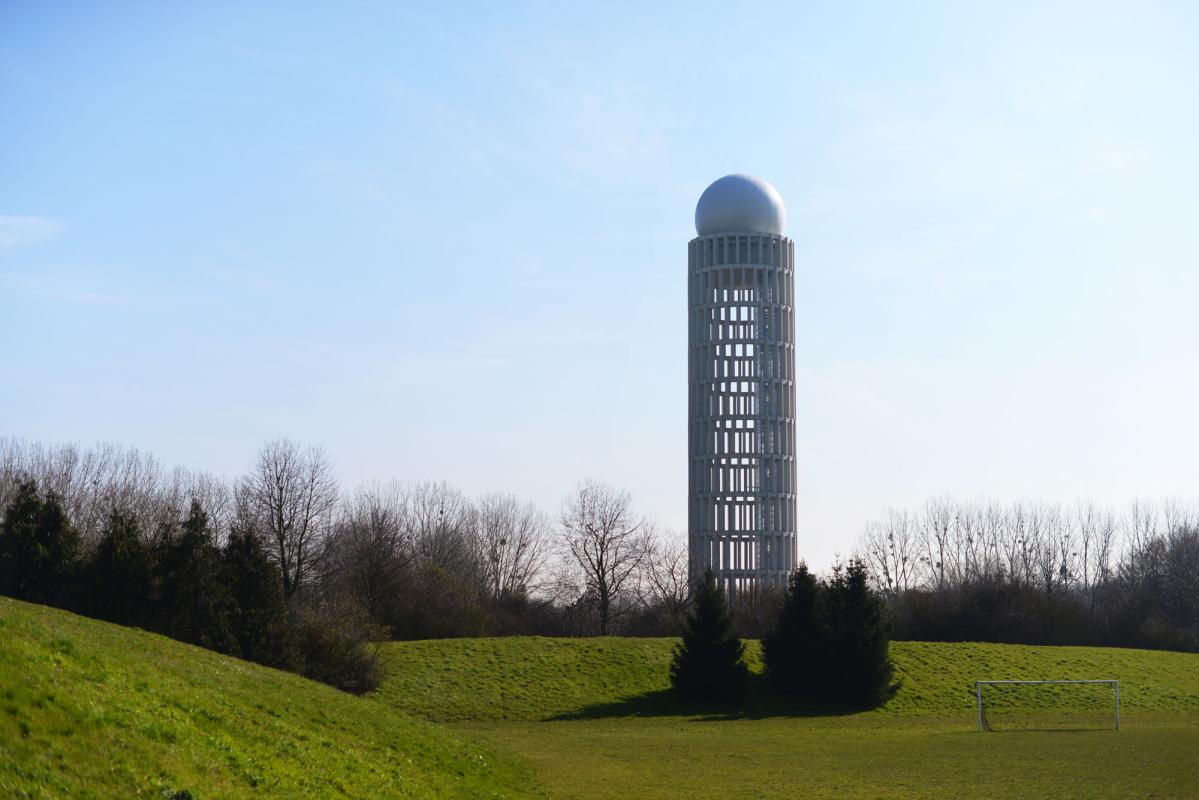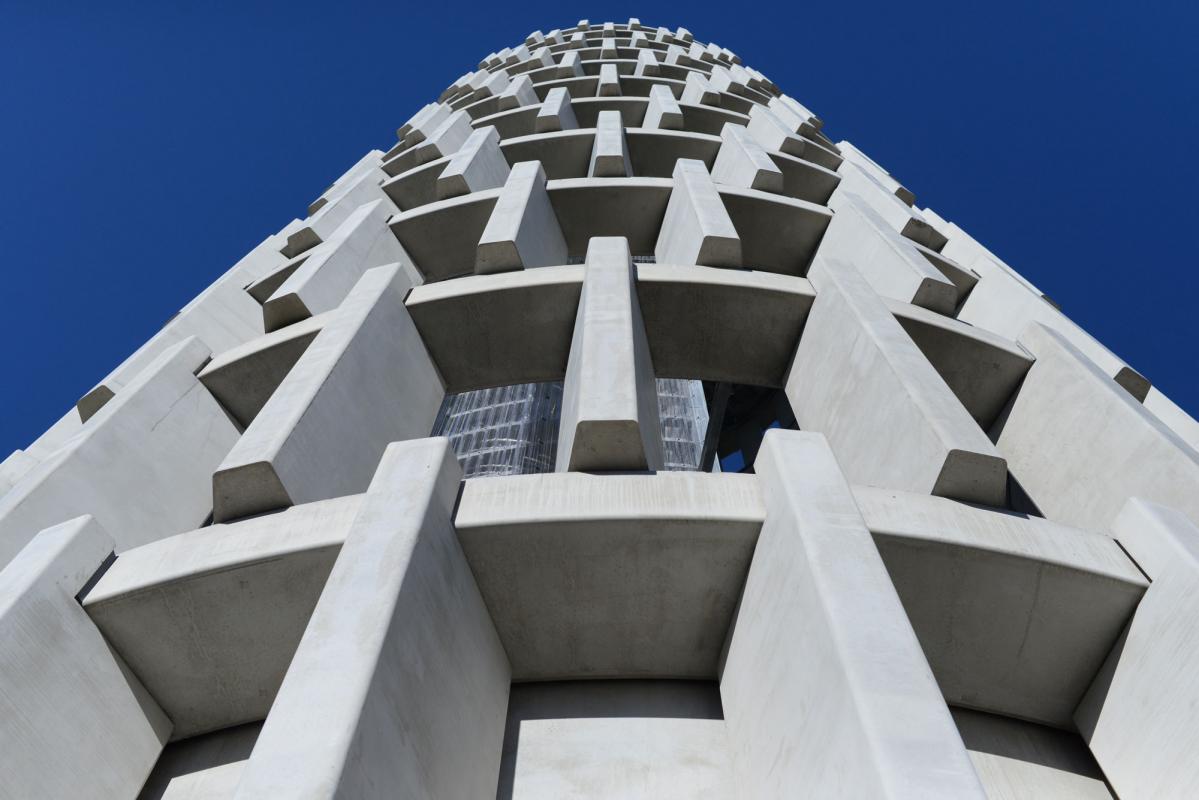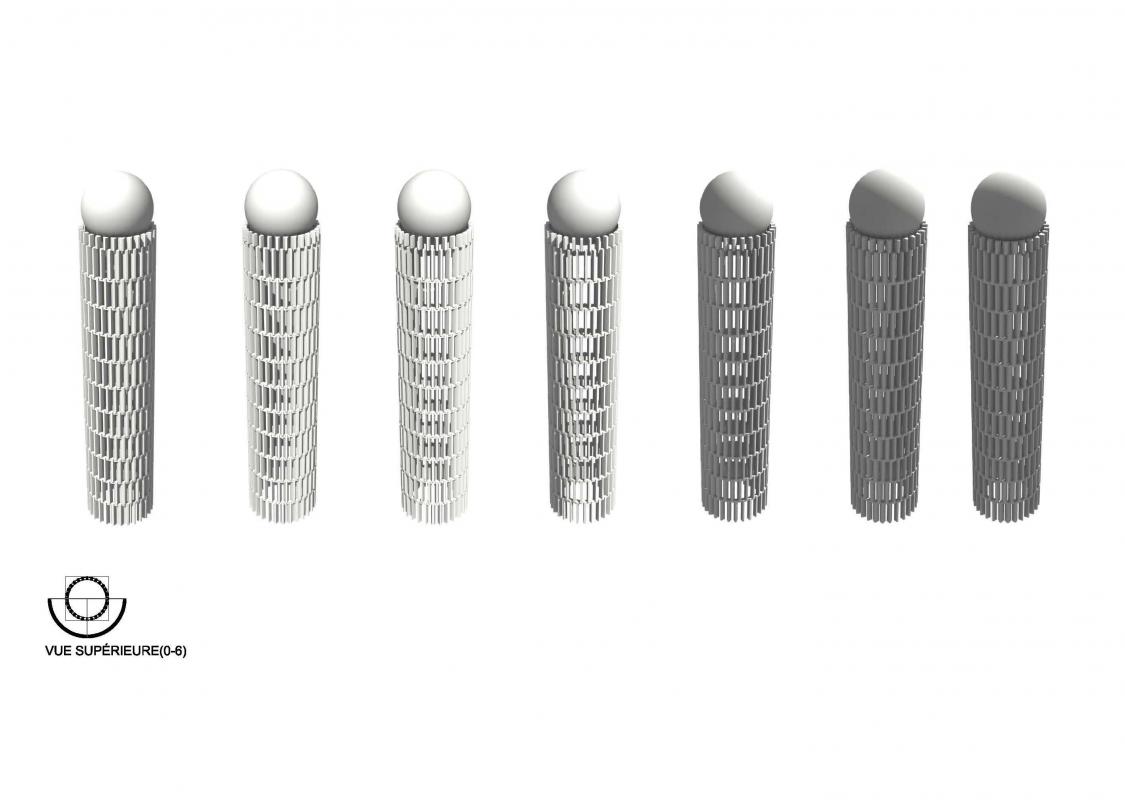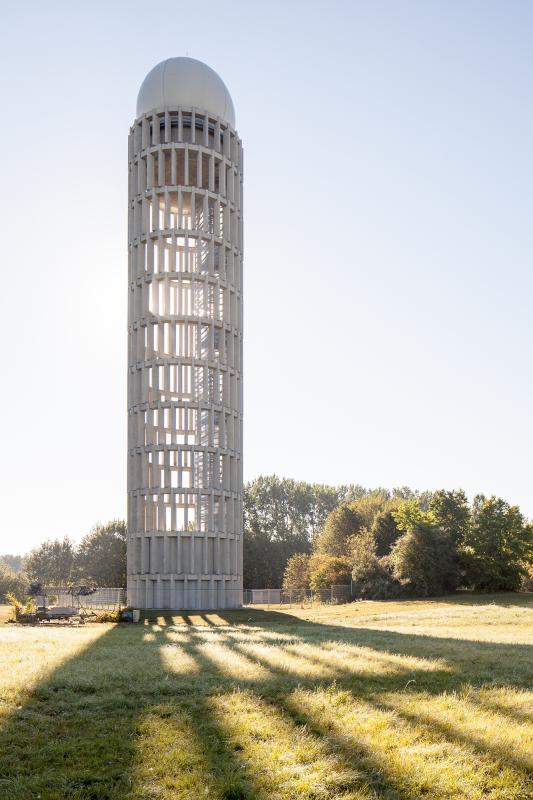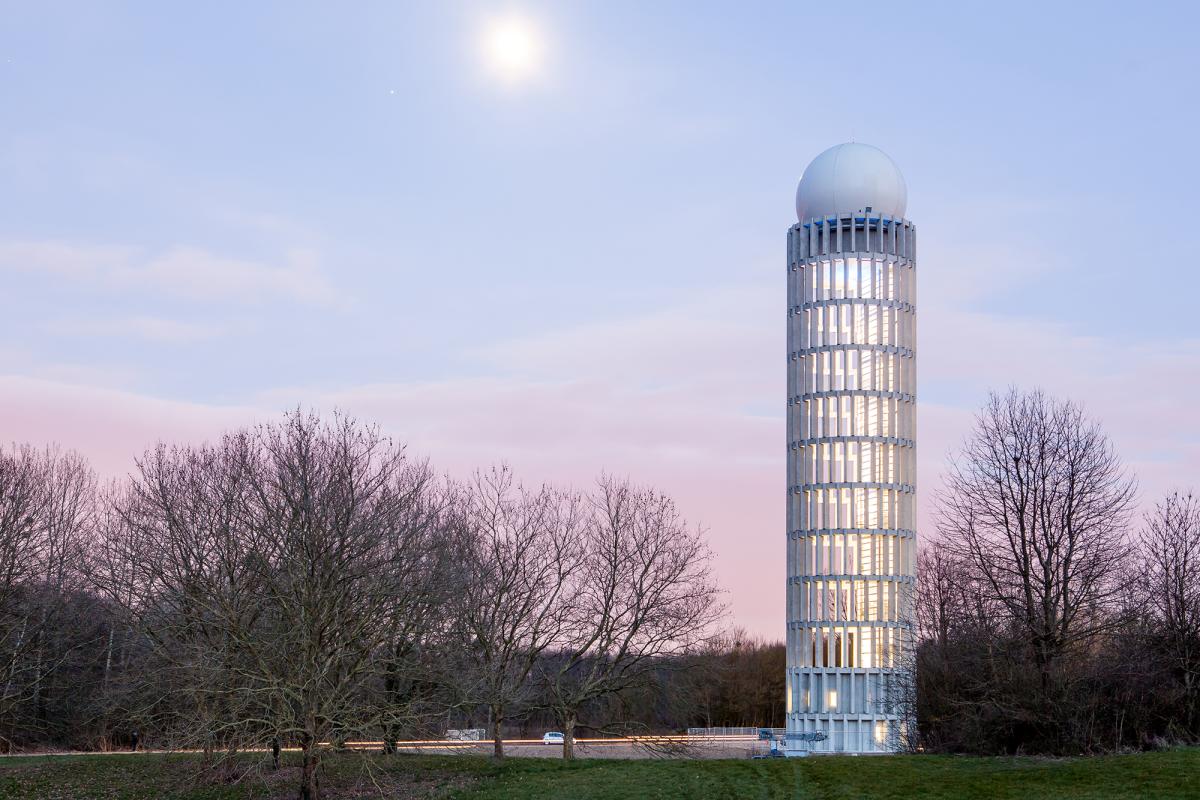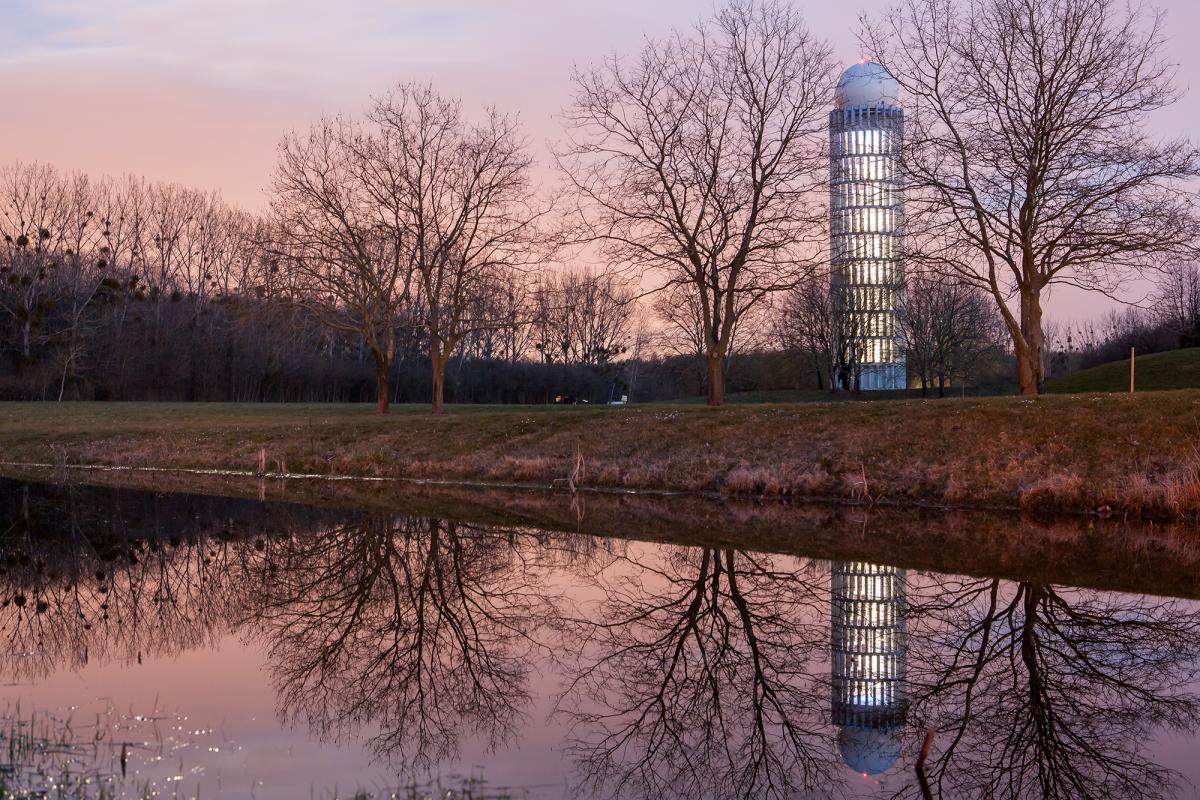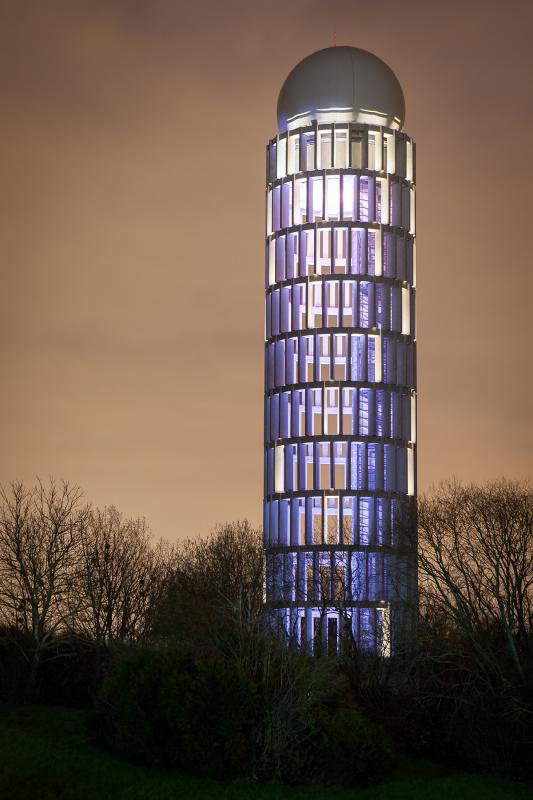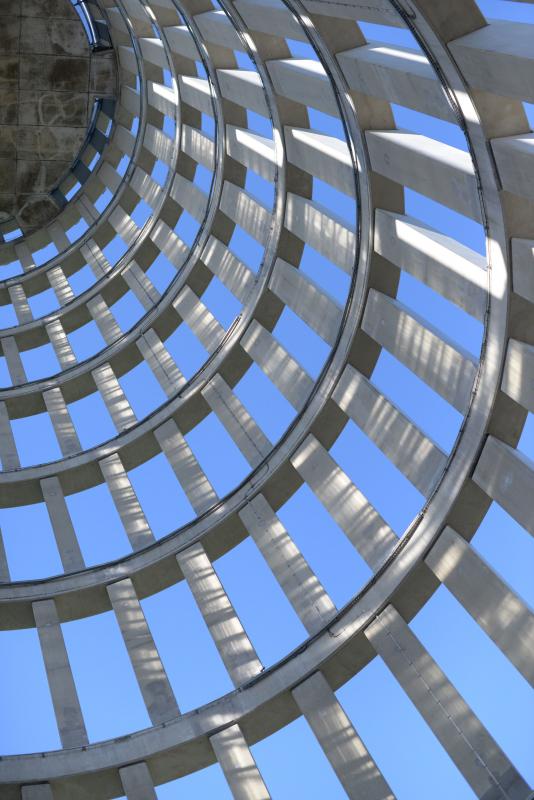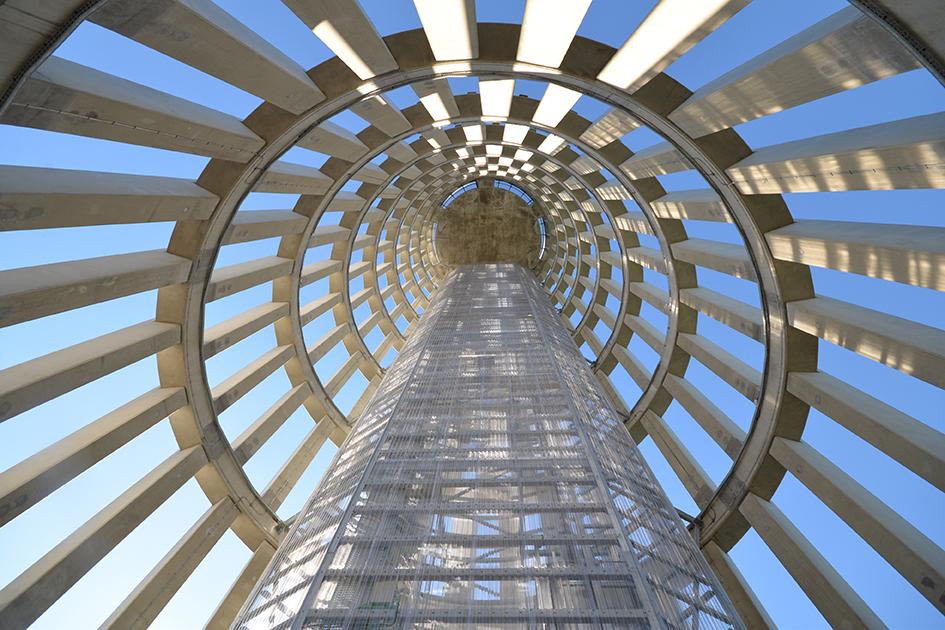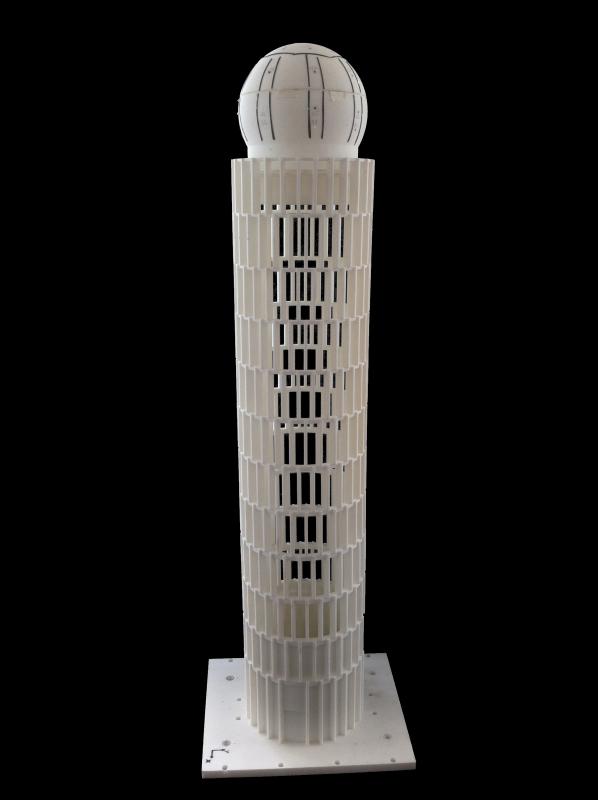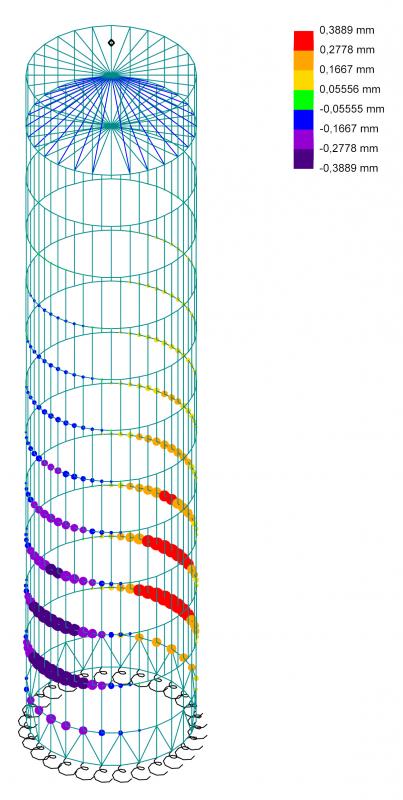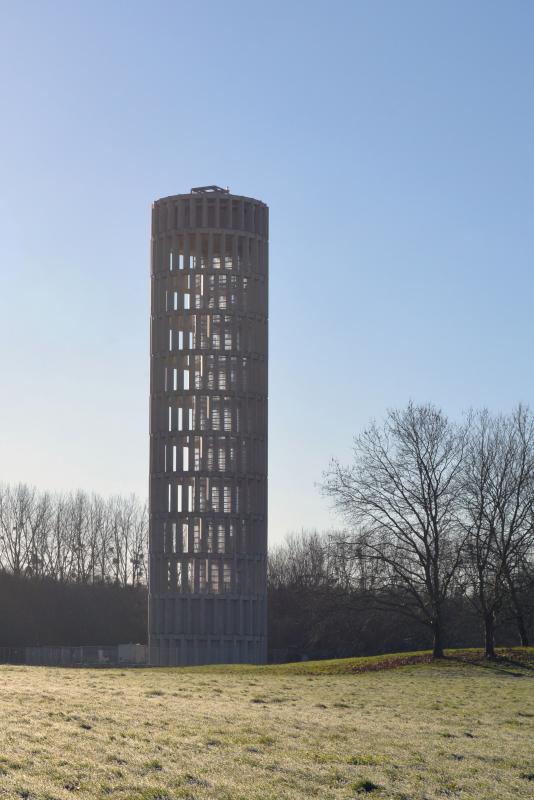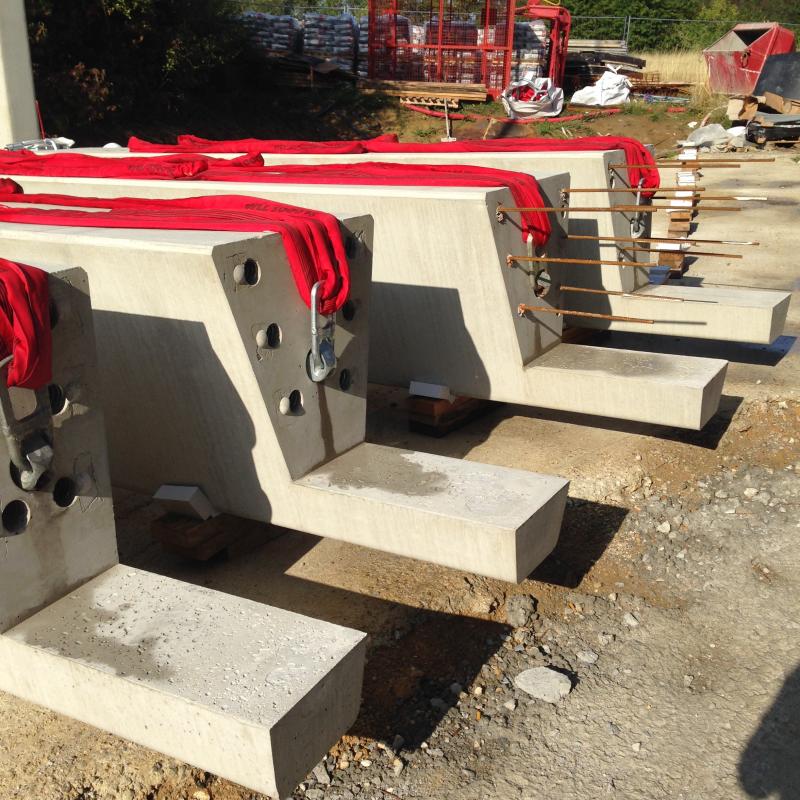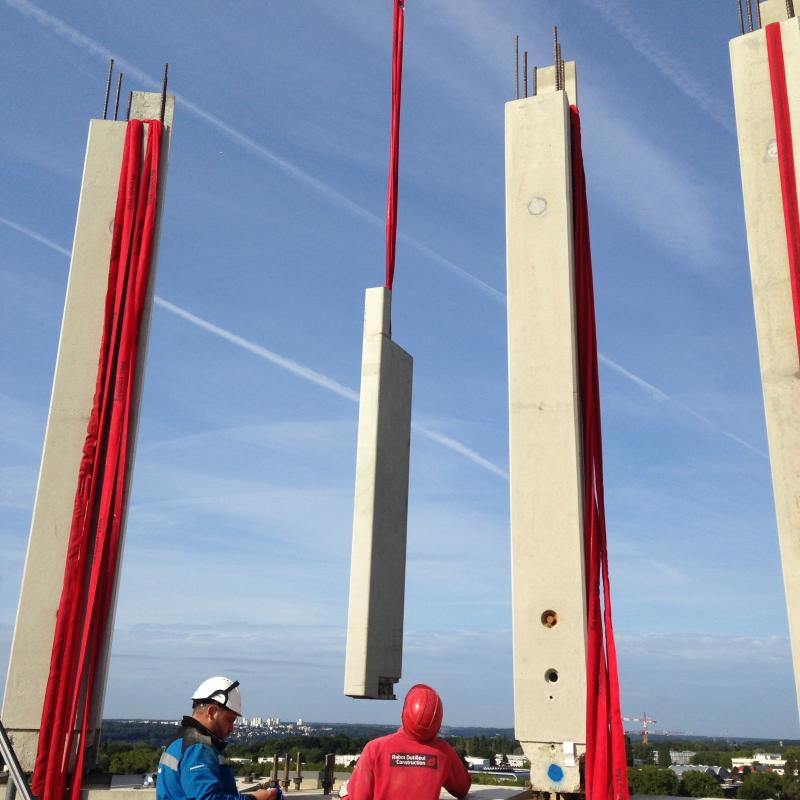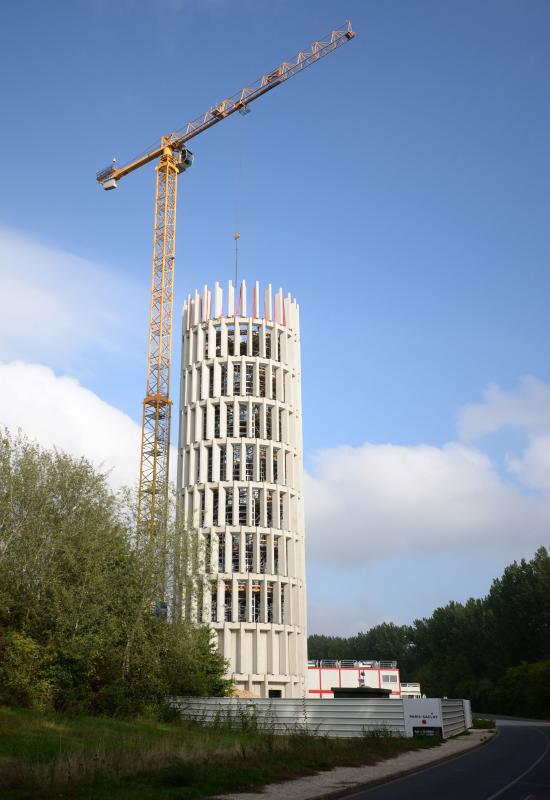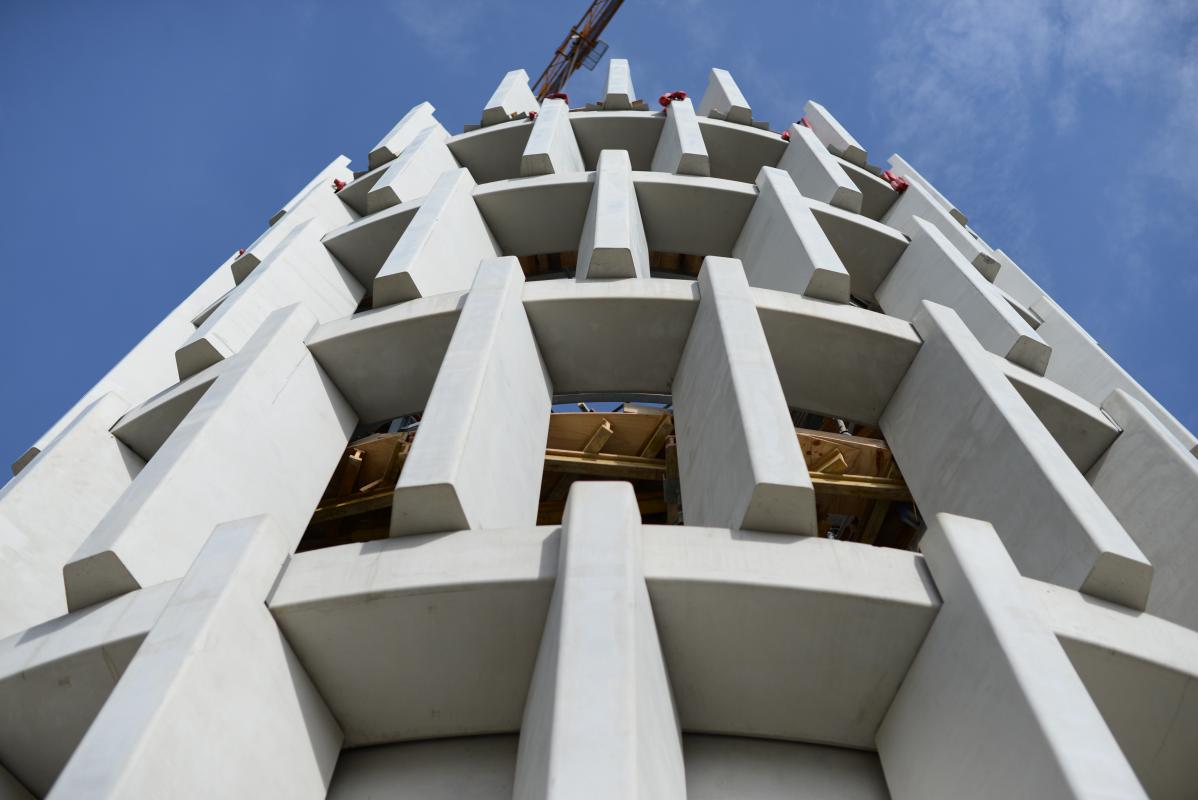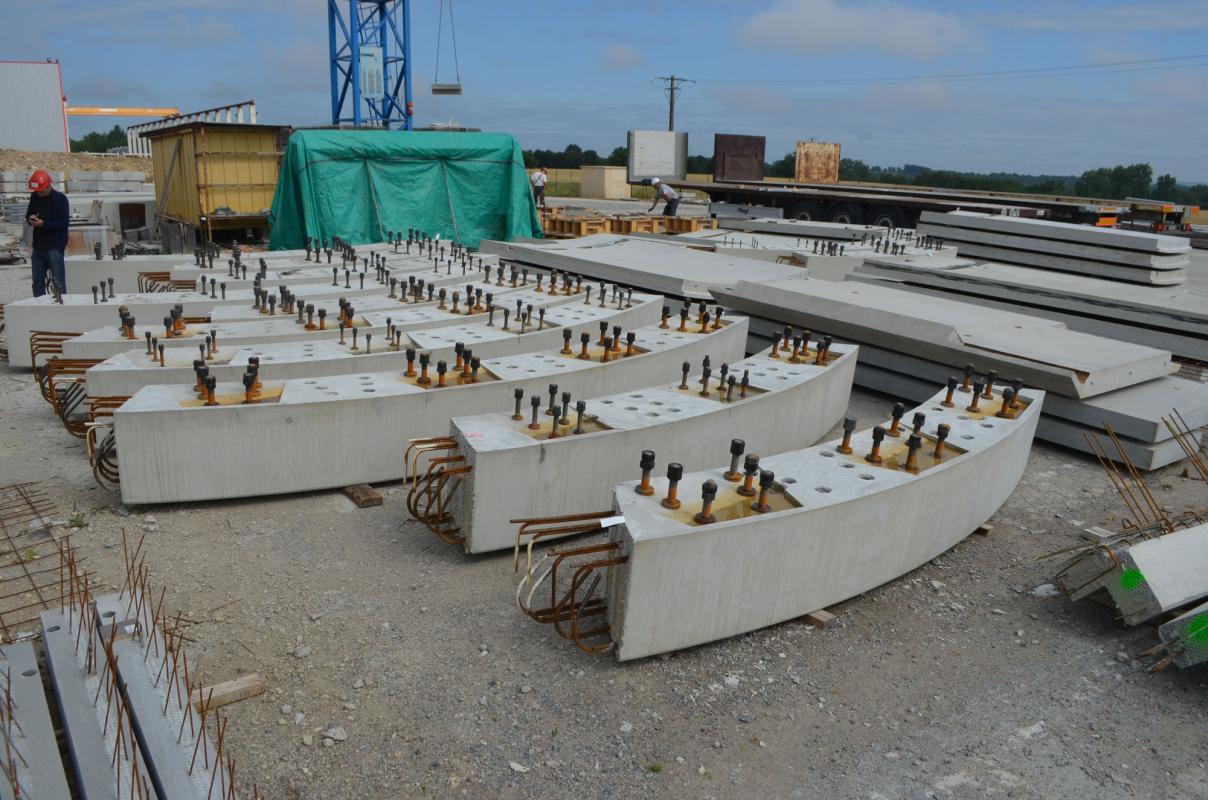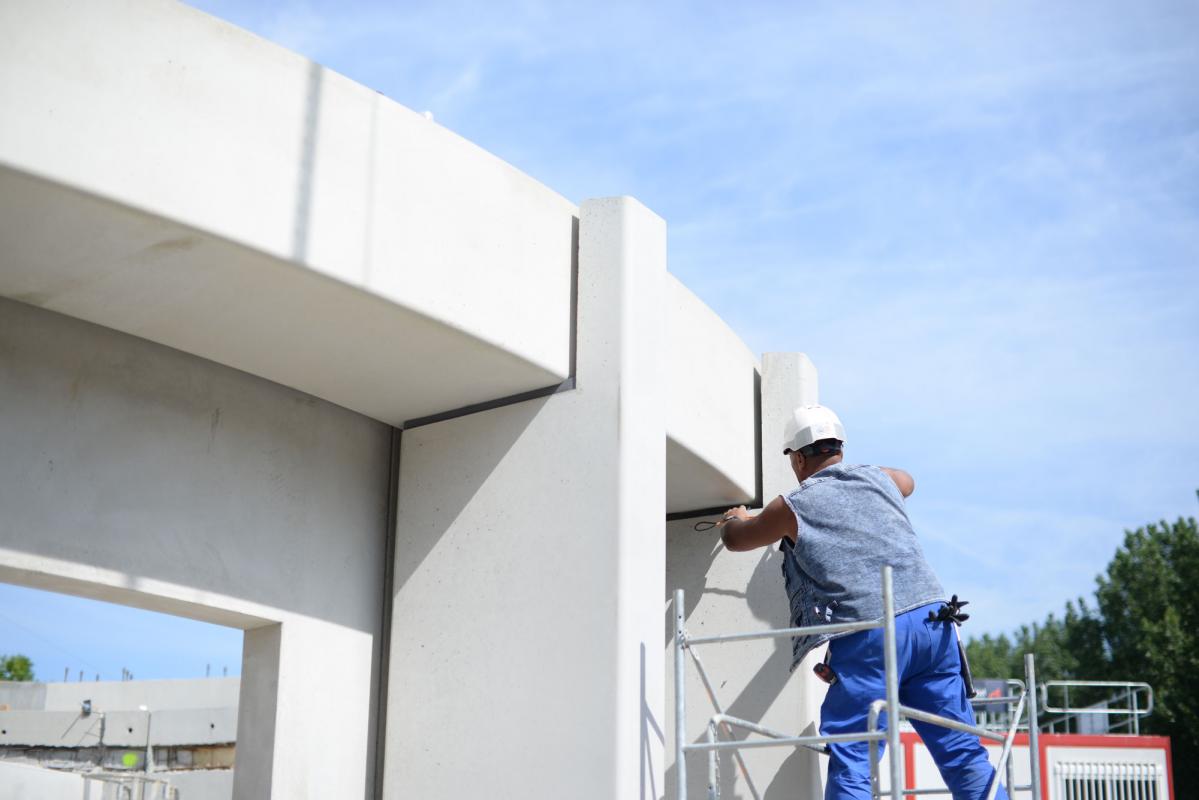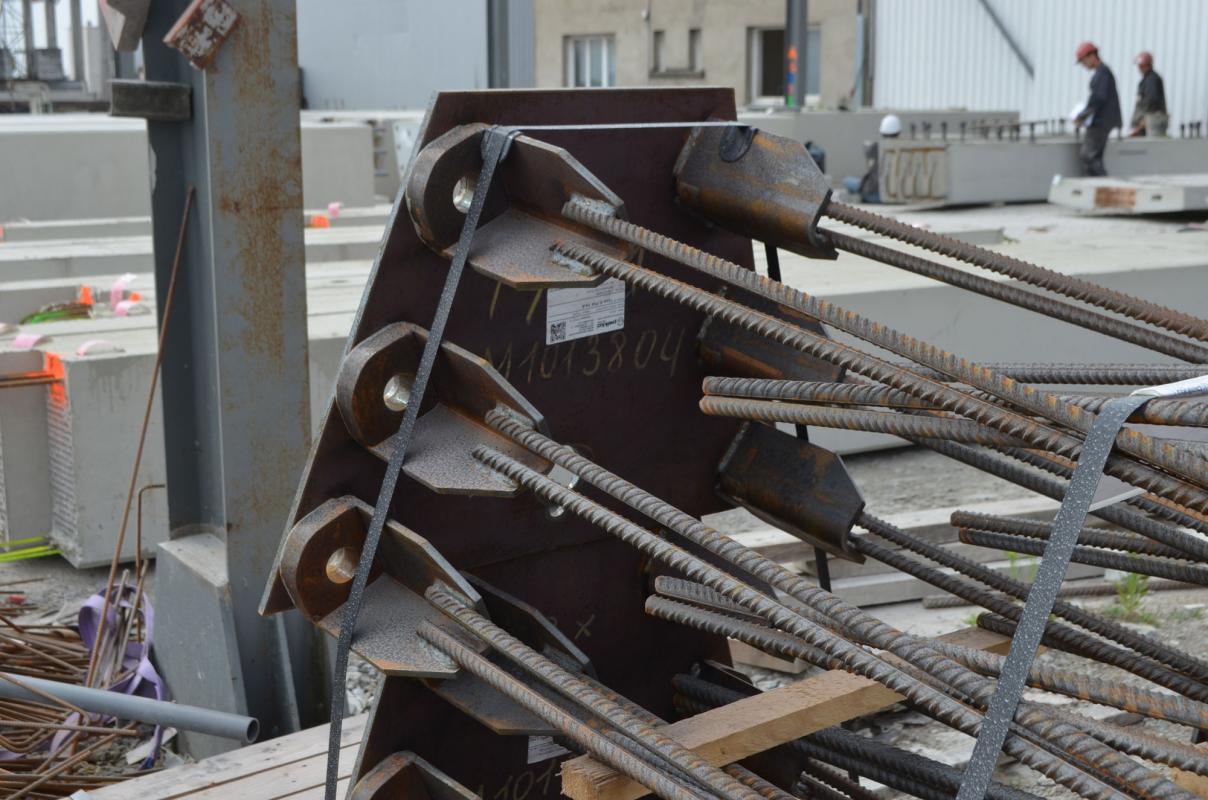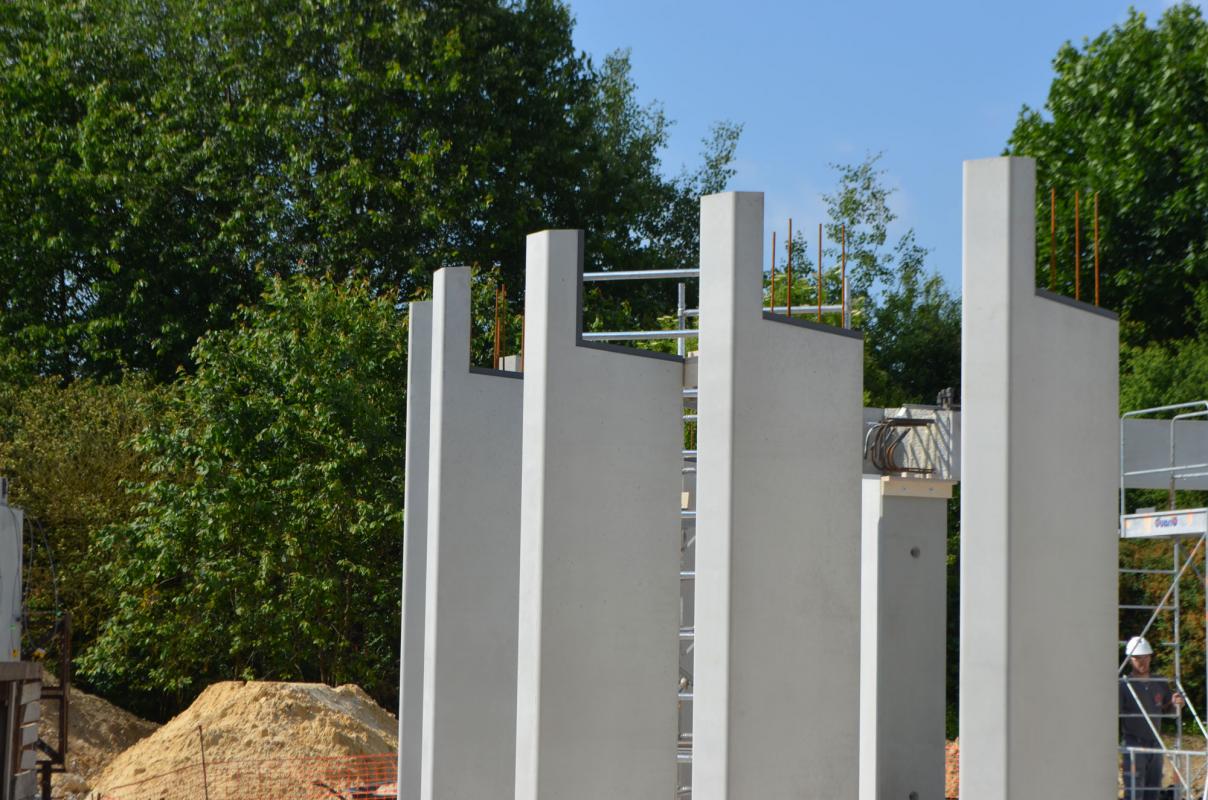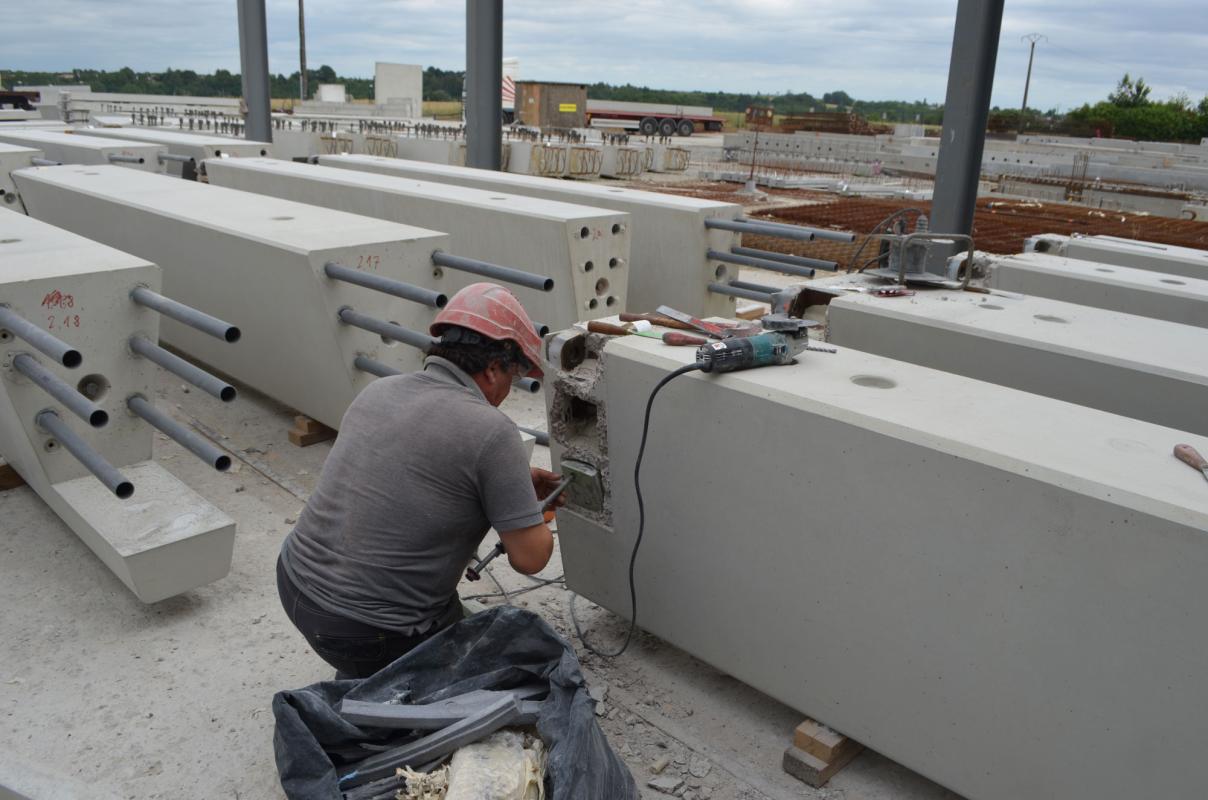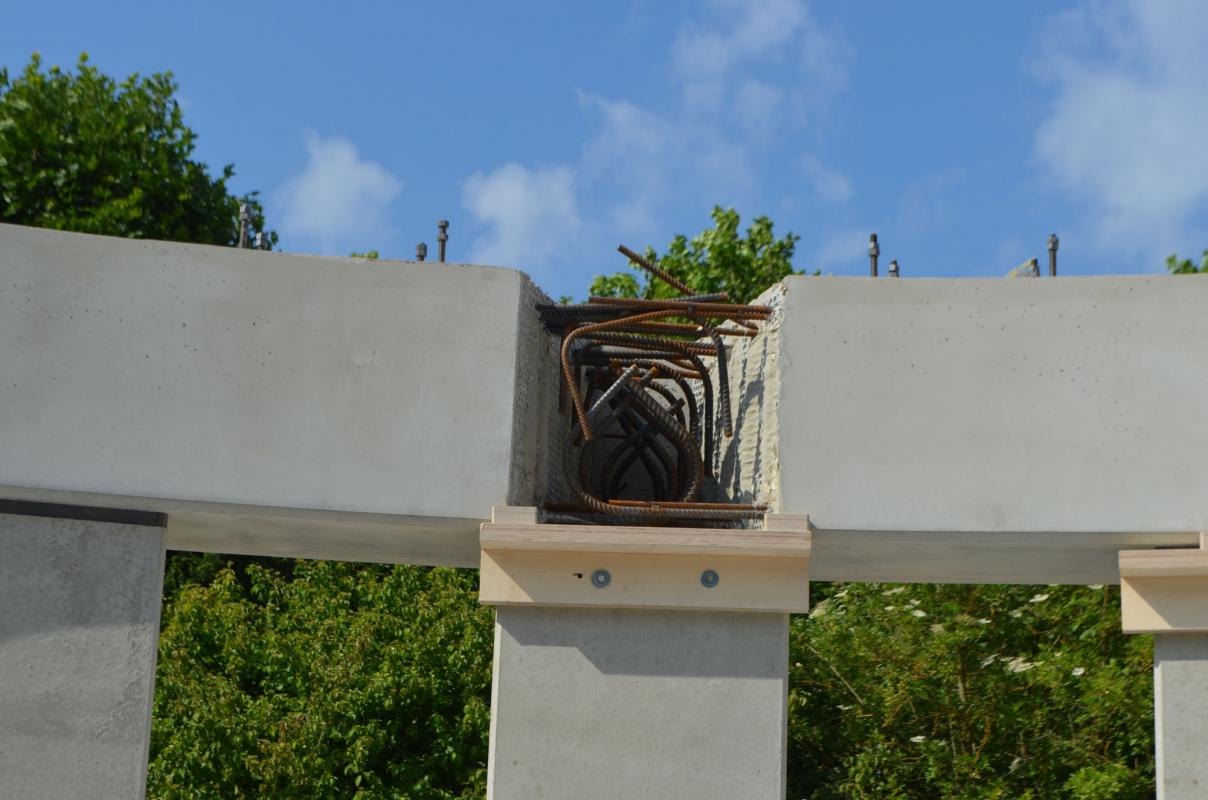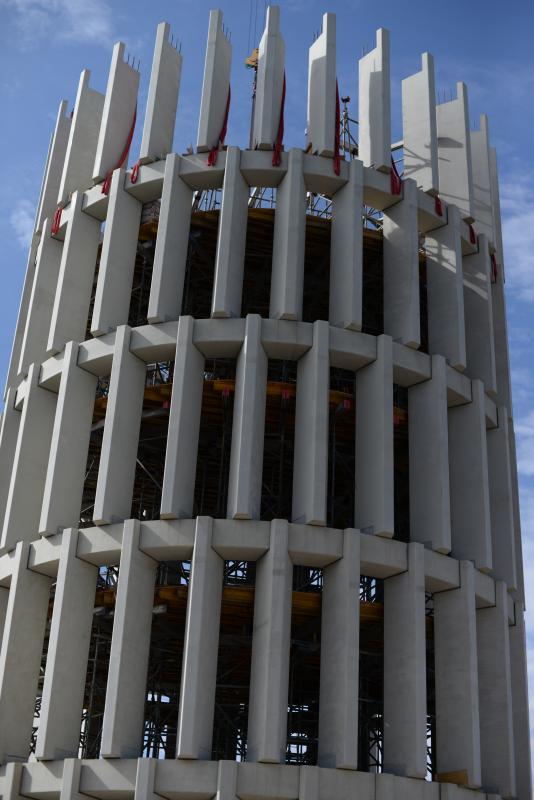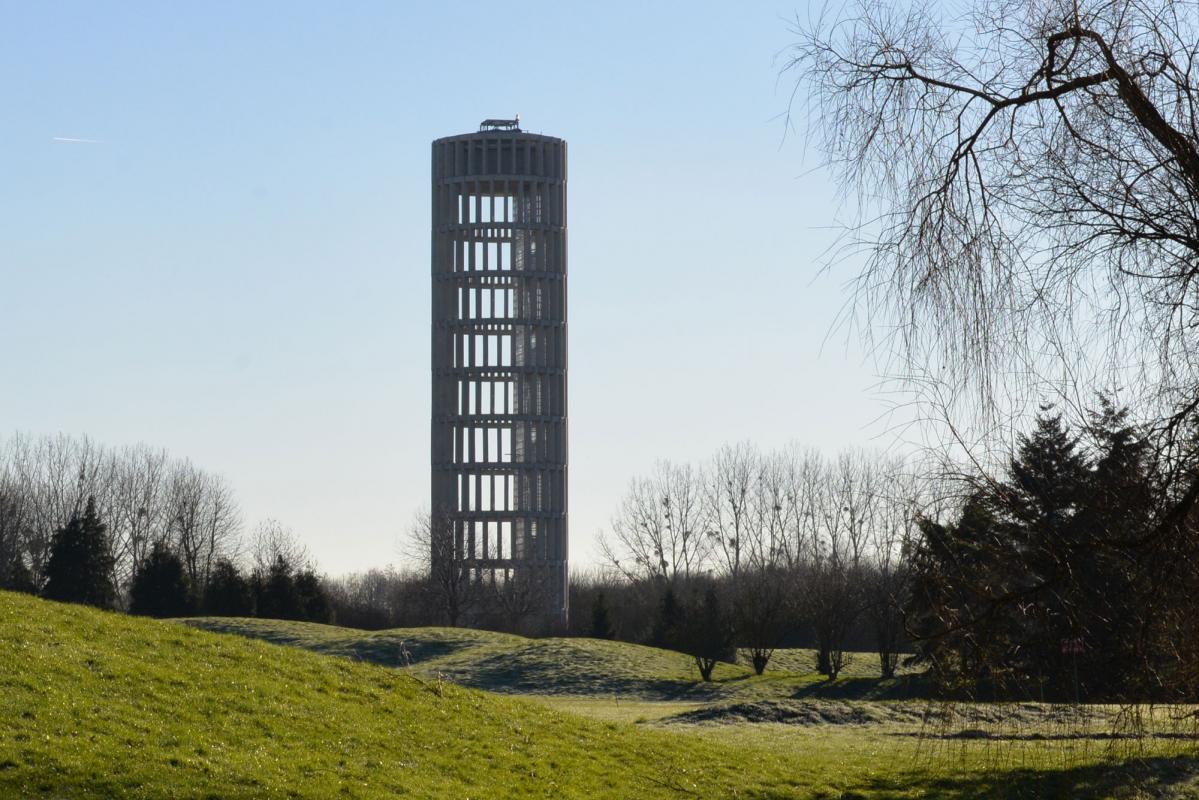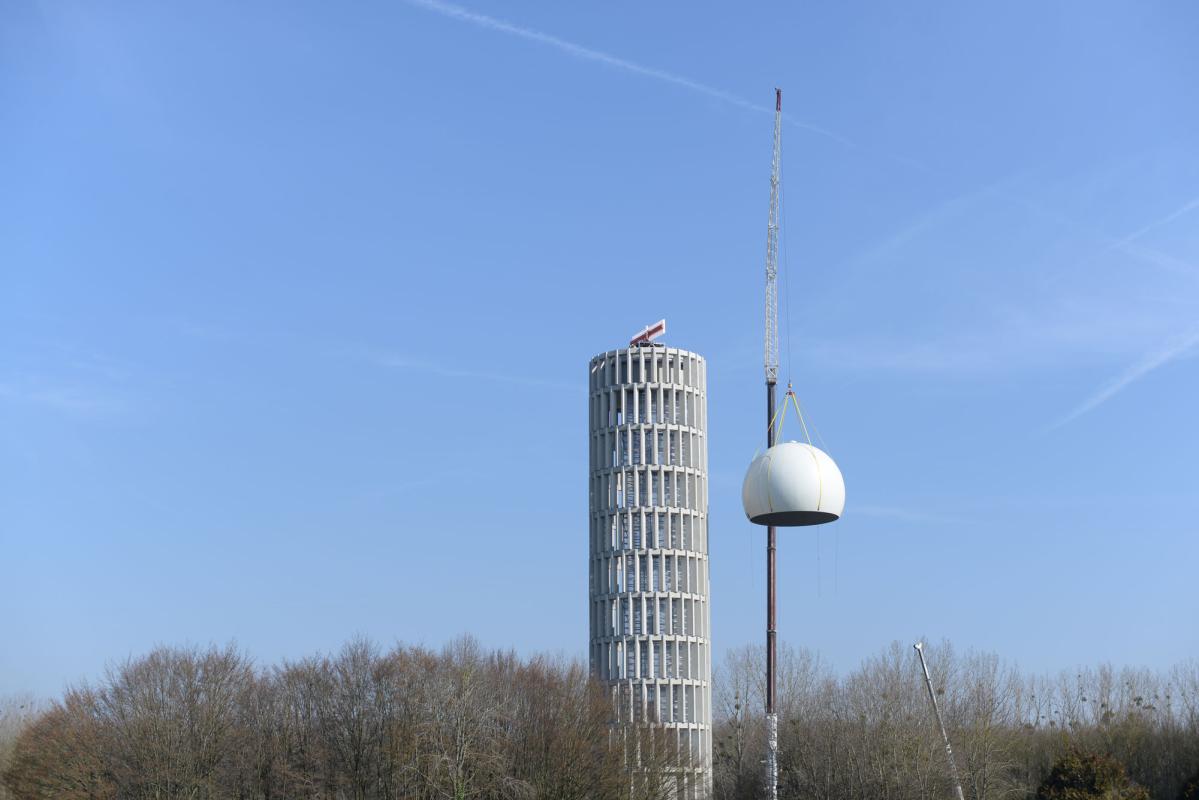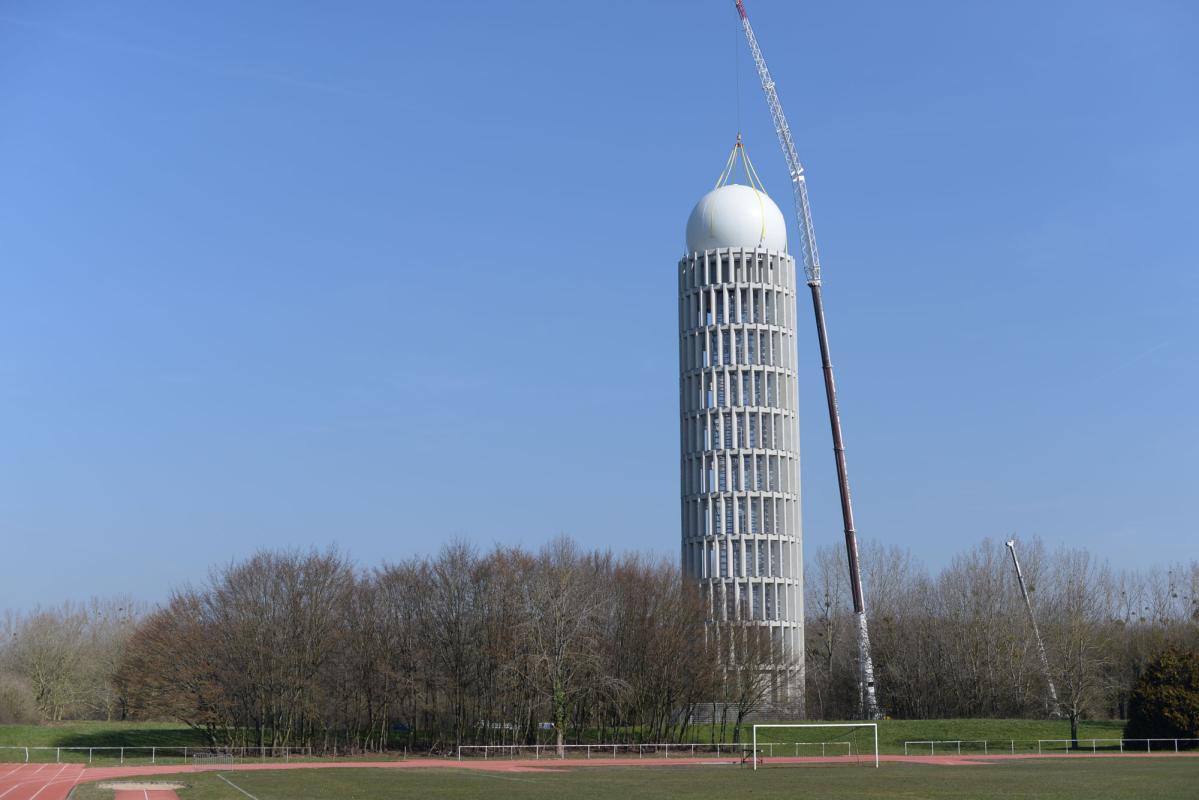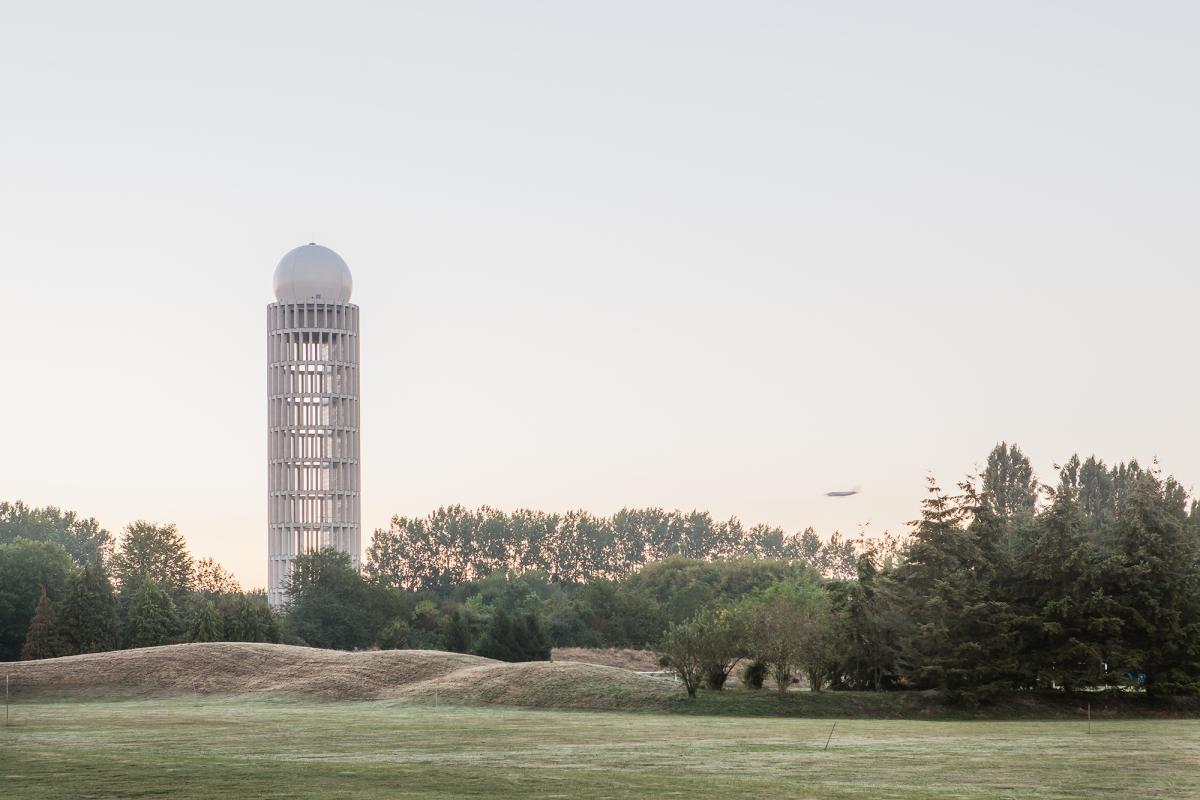Flight traffic radar
Construction of the new radar station for Orly Airport, design and construction consultation, Paris-Saclay
Sited on the campus of the Ecole Polytechnique, the radar tower will be one of the first projects for the large-scale science cluster currently being developed on the Saclay plateau. Over 60 m high, the tower will provide more reliable air traffic control on the approach to Orly Airport, a busy flight path. Rising above other buildings on the plateau and the tree tops of the neighbouring forest, the tower is also set to become a landmark indicating and orientating this new area of development.
The tower is a 13.4 m diameter cylindrical trunk, inside which all the required technical equipment can be housed. The only protrusion is the radome that tops the edifice. This simplicity of form is reinforced by the choice of only one material, pale grey, prefabricated concrete. The tower will generally be seen against the sky: in order that light may shine through it, the structural wall is perforated, similar to some of the work of engineer Eladio Dieste in Uruguay.
At each level, the trunk is made of 28 concrete posts, arranged at regular intervals around its perimeter. These posts are trapezoidal in section, with important variations in width on their back face. Of a constant height of 4.84 m, they are set into annular beams at their head and base, forming 12 superimposed sections. Each section is offset by a half-grid rotation from the adjacent sections, breaking the vertical continuity. The porosity of the trunk, the alternately arranged posts, their multiple faces, go to form a sort of kaleidoscope beneath the changing light. The internal volume of the trunk is open to the air, interrupted only by a lightweight steel structure to stabilise the stairwell and lift shaft.
Behind its formal simplicity, this construction boasts a complex structural functionality, particularly in the face of wind. The porosity of the trunk meant that wind tunnel testing was necessary to ascertain performance under different conditions. The tower’s stability is obtained using the principles of a Vierendeel truss system with posts embedded into the beams, all of which are prefabricated. This assembly, repeated 666 times, constitutes the main technical challenge of the project because of the multiple difficulties that it imposes: securing the parts together at altitude, precision adjustment, substantial and complex loading, the density and geometric variation of the sections.
Follow the construction here : ► Real time Tour Radar Saclay

